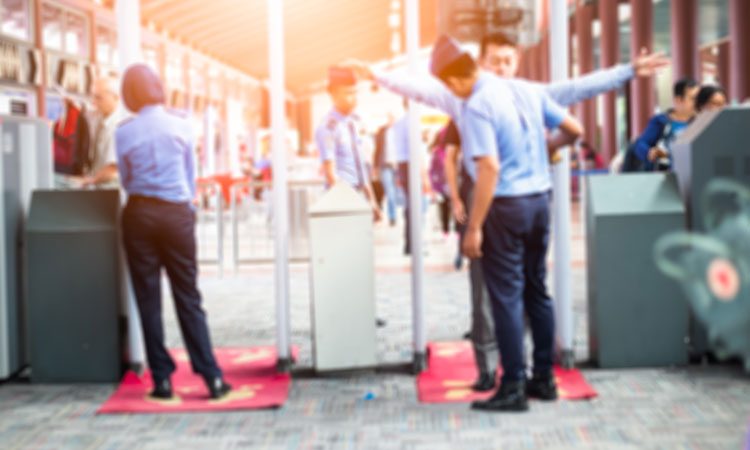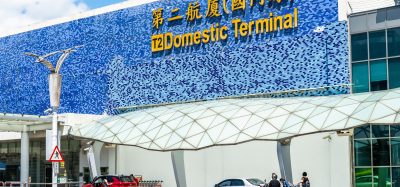Digital imperatives in airport security
- Like
- Digg
- Del
- Tumblr
- VKontakte
- Buffer
- Love This
- Odnoklassniki
- Meneame
- Blogger
- Amazon
- Yahoo Mail
- Gmail
- AOL
- Newsvine
- HackerNews
- Evernote
- MySpace
- Mail.ru
- Viadeo
- Line
- Comments
- Yummly
- SMS
- Viber
- Telegram
- Subscribe
- Skype
- Facebook Messenger
- Kakao
- LiveJournal
- Yammer
- Edgar
- Fintel
- Mix
- Instapaper
- Copy Link
Posted: 23 November 2019 | Diogenis Papiomytis (Frost & Sullivan) | No comments yet
As technologies such as artificial intelligence, robotics and blockchain increase not only the efficiency but accuracy of airport screening, Diogenis Papiomytis, Global Program Director – Commercial Aviation, Frost & Sullivan, explains how digital innovations are already having a powerful impact on airport screening, and why this needs to continue evolving.


The airport security market is witnessing a revolution, driven by adoption of new screening technologies and intense digitisation of security processes, mainly in passenger and baggage screening. This is part of the overall digital transformation of the airport environment, where most of the key digital transformation projects running at airports worldwide fall within five main digital transformation categories:
1. Data visualisation and analysis
2. Digital infrastructure
3. Passenger and baggage journey
4. Airside operations
5. Administration and asset management.
Smart-security projects, though they fall within the largest digitisation category related to the seamless passenger and baggage journey, are enablers of safe and friction-free operations.
Passenger and baggage screening
Passenger and baggage screening are the two processes that have the biggest impact on airport operations and customer satisfaction as they are, by far, the most pertinent pressure points for passengers and operators alike. The fact that security is a pressure point is not new; however, we now see that there is enough interest and investment – by operators – to create a positive experience without compromising on safety.
There are a few solutions and technologies that will help elevate this experience:
Computed Tomography (CT)
This is not a new technology but its application in cabin baggage screening will greatly improve throughput and passenger experience, especially at hub airports. Already many airports have run trials and are now implementing 3D imaging, in line with ECAC CB Standard C3, allowing laptops and liquids to stay in bags. On its own, however, the application of CT technology in baggage screening is not a panacea. Speeding up baggage screening when passenger screening continues to employ metal detectors or static full body scanners, is counterintuitive.
Terahertz (Thz) radiation
The application of Thz radiation in walk-through body scanning is the counterpart of CT baggage scanning and can revolutionise passenger screening. The throughput rates of walk-through body scanners, already in trial and in process of certification, are like those of CT scanners. Combined, CT machines and Thz radiation detectors will enable a throughput of approximately 1,000 passengers and bags per hour at security lanes; up to 10 times faster than what is experienced by passengers at airports today.
Artificial intelligence (AI)
This development is the real game-changer. AI is the add-on tool, used in conjunction with CT machines and Thz radiation detectors. The applications of AI are numerous, impacting every digitised process. Higher throughput rates will necessitate the replacement of human checkpoint operators by algorithms that can scan through thousands of images and identify threats. AI is also the enabler for both biometric deployment across touchpoints and of new solutions, such as risk-based screening and intelligent video analytics. Finally, the intersection of AI and robotics will bring mobile security checkpoints and patrolling of airport premises.
However, it is important to note that with few exceptions (for example multi-agent systems for security event predictions), AI requires large datasets and human inputs through supervised learning. We are still not at a stage where AI can identify every possible threat, both within the contained environment of a security checkpoint (i.e. image screening) and across large rooms or terminal buildings (i.e. CCTV analytics). This is evident from the high number of false positive alerts in screening, as witnessed by airports that have implemented or trialled new screening solutions embedded with AI. There are also no industry-wide AI standards and no common policies on the certification of AI for critical security processes from industry bodies. For now, AI will require substantial human involvement in the form of training and monitoring. This presents its own challenges; algorithms trained by humans to create threat indices and profiles of passengers, to pre-empt threats, will also adopt and potentially exacerbate human biases.
At present, AI will see widespread implementation in non-critical applications, such as predictive maintenance for security equipment, aiming to increase system reliability.
Biometrics and blockchain
On the other hand, the intersection of biometrics and blockchain aims to improve identity management, safeguard passenger data and create frictionless journeys. These technologies are enablers of industry and corporate initiatives such as IATA’s One ID and single-travel tokens. Implementation of such initiatives in border control and identity management is either contained within certain jurisdictions or driven by bilateral agreements (for example Canada and the Netherlands).
The digital imperative in airport security
Undoubtedly, digital transformation in security is long overdue. Metal detectors and 2D X-ray scanning are inept technologies to deal with a doubling of passenger traffic in the next 20 years. The passenger experience in airport-screening touchpoints has not improved much in that time and has indeed fallen far behind improvements seen in other parts of the passenger journey. Furthermore, it seems that any technological improvements are quickly subdued by the introduction of new processes stemming from the identification of new potential threats.
There is evidence that we are at a turning point, as airport operators focus on the elimination of passenger pressure points and security system suppliers grow their R&D budgets to capitalise on innovation platforms. Innovative start-ups, most of which introduce applications from different industries, are also making an impact across all facets of airport operations, including security. These are all positive developments. However, the nature of security is such that major performance leaps are tied to industry-wide collaboration, new standards and common initiatives. Moreover, performance improvements in individual processes will only bring marginal benefits in the passenger journey. There is a need for integrated solutions, which should drive industry partnerships and acquisitions of suppliers specialised in individual security processes.
Challenges abound, yet industry developments bring a new sense of optimism for a transformation of the security checkpoint.
Biography


Issue
Related topics
Airside operations, Artificial intelligence (AI), Baggage handling, Biometrics, Blockchain, Border control, Digital transformation, Security


















